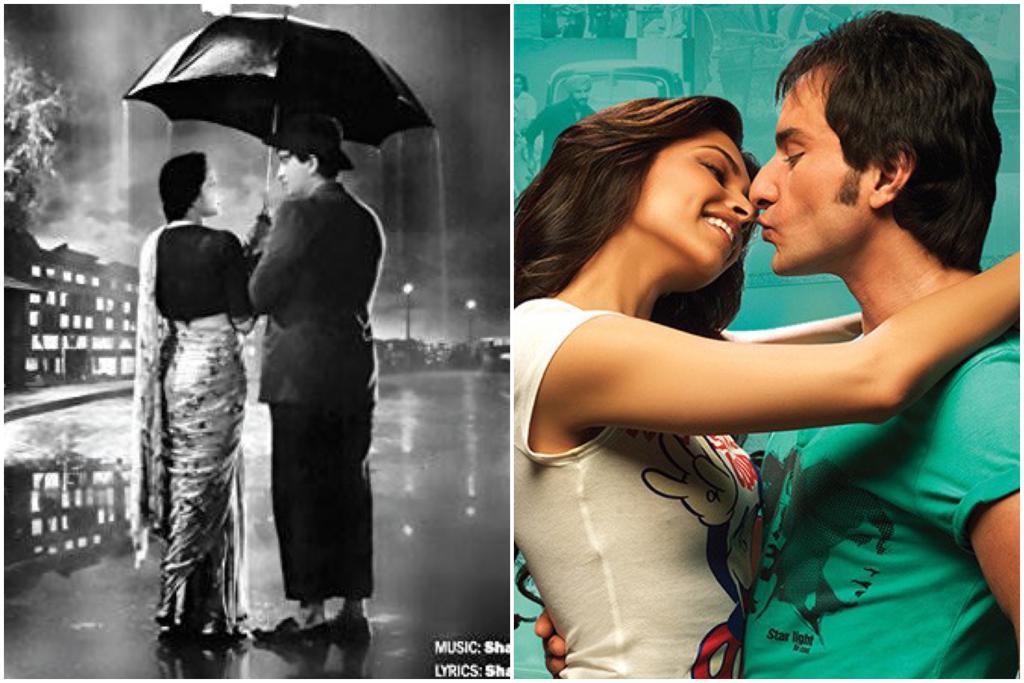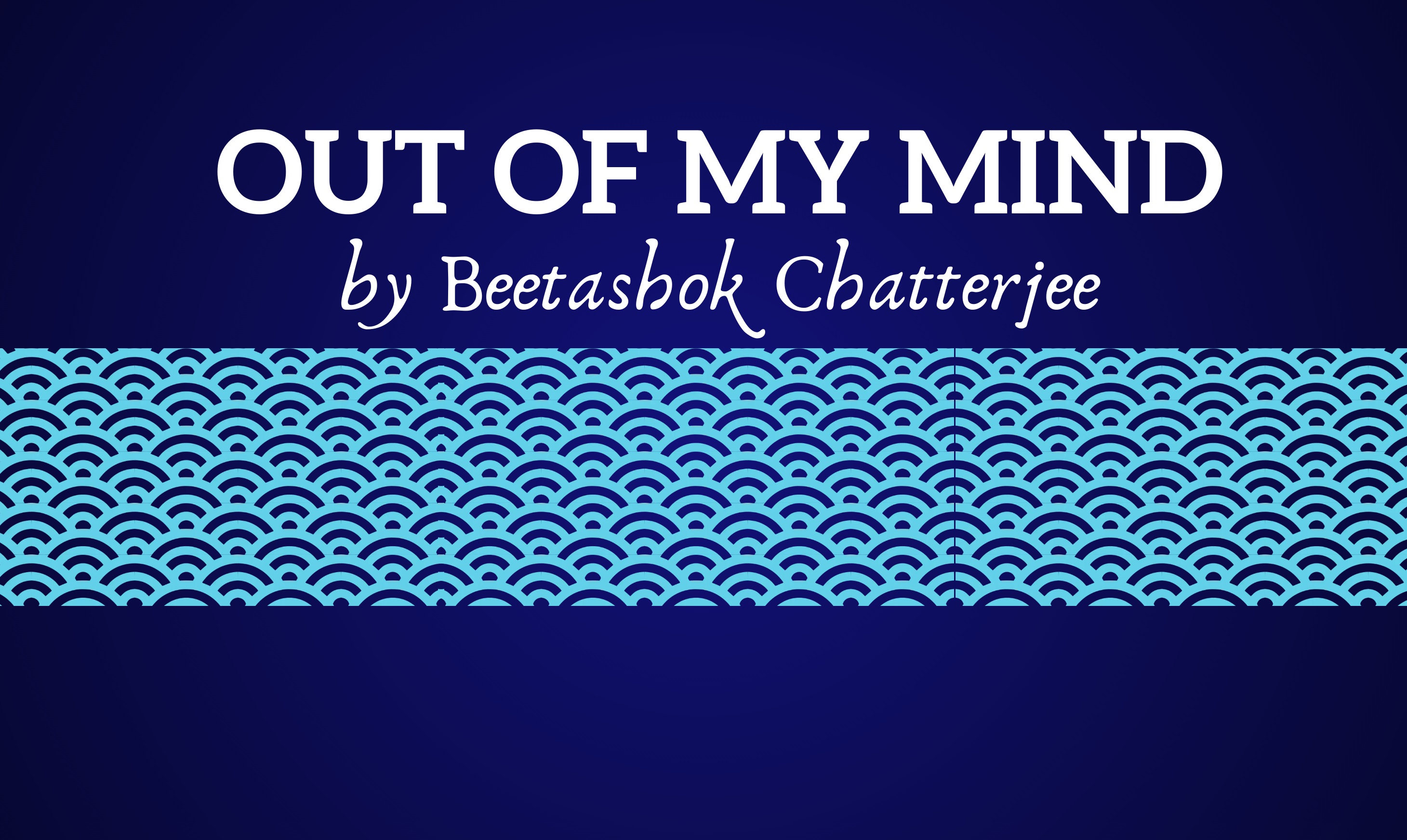I blush easily. As a kid in the 1960s, I remember turning a delicate pink while watching a black and white Hindi film when the camera focused on two identical flowers that slowly bent towards each other—shyly, unsure of themselves….and then touched. The significance of the act was not lost on me as I heard the sighs from the audience. I had witnessed my first kiss on celluloid, a moment followed by many such in subsequent films that I watched over the years.
Time hurried on. Many years later, at 17, inured to kissing scenes as a regular viewer of Hollywood films—including a couple of ‘A’ rated ones under my belt—I saw Rishi Kapoor and Dimple Kapadia in a lip lock in Bobby. I blushed again. It made me uncomfortable. I mean, this couldn’t possibly be happening in India! To a boy who’d earlier taken a year to absorb the fact that he and his brothers could not have been the products of Immaculate Conception, and that—horror of horrors!—his staid parents must have ‘done the needful’ regularly, I just could not wrap my head around Indians kissing on the cinema screen.
Last year on Netflix I saw Bhumi Pednekar and Neil Bhoopalam in Lust Stories going at it hammer and tongs in bed. I realized then how far we’ve come down that road. In fact, I think we’ve arrived.
Bollywood’s and Hollywood’s projections of romance have always been a strong reflection of our changing society. In mainstream Hindi films especially, love and romance have always been the timeless core—and I’m pretty certain in regional cinema too—while action, thrill and horror have all been sub-genres. Do you agree?
Romance was shy and melodramatic in movies from the 1950s to the 70s. Kissing was taboo, of course, and even embraces rare. Raj Kapoor and Nargis standing under an umbrella in the rain in Shree 420 (1955), or Guru Dutt just looking at Waheeda Rehman in Pyaasa (1957), saying nothing—yet his eyes speaking volumes—are iconic images that remain with me till date. The women were demure and never made the first move. Stories and relationships focused on circumstances where a man and a woman faced adversity together, in the form of poverty, injustice or society. The stories would reflect the Nehruvian socialist India of those times, where genteel poverty had respectability about it, and it was considered bad form to flaunt one’s wealth. I do not recall Raj Kapoor, Dilip Kumar, Dev Anand or a young Dharmendra ever playing a wealthy man.
As Indian cinema transitioned from black and white to colour, the stories too gathered tinges to evolve. Mughal-E-Azam (1960) was an epic historical romance between the Mughal Crown Prince Saleem and a beautiful, ill-fated court dancer, which perpetrated a war between father and son. Guide (1965) explored the complexities of the flawed hero falling in love with a married woman and then growing apart from her. Ram aur Shyam (1967) had Dilip Kumar in a double role displaying his comedic skills while romancing two heroines. Aradhana (1969) was about the sacrifice of a mother for her son and gave rise to a superstar Rajesh Khanna, who would reign over Bollywood for the next few years. Then Bobby (1973) came along with a new lead pair totally convincing and adorable, and a hit soundtrack that was naughty and suggestive. Bobby introduced a streak of rebellion in love stories which later became a paradigm for films to come. Multistarrers like Sholay (1975)—a bromance, Dharam Veer (1977), Amar Akbar Anthony (also 1977) and Naseeb (1981) enjoyed great popularity with two or three lead pairs singing to and romancing each other, though the trend petered out in due course.
The movies of the 1980s were different. The girls had big sunglasses, puffed hairdos and were no longer demure. The boys’ brigade personified by the likes of Anil Kapoor, Jackie Shroff and Sanjay Dutt were daredevils who were also very angry for some reason, like the brooding, older Amitabh Bachchan in most of his roles at the time. Films like Rocky (1981), Hero (1983), Tezaab (1988) and Qayamat Se Qayamat Tak (1988) had the central theme of intense, passionate love that encouraged the protagonists to run away, or take drastic measures to fight for their love. On the other hand, Coolie, Himmatwala (both 1983), Sharaabi (1984) and Shahenshah (1988) were love stories all right, but cringe worthy, marred by loud action, macho posturing and dialogues inducing whistles from the front rows, thus overshadowing the love aspect in the stories. Synchronized dancing on hilltops became the norm for expressing love and romance, and I never understood why. It was possibly the worst decade for Bollywood films, in my humble opinion. Silsila (1981) and Sadma (1983) were notable exceptions. To my relief, in 1989 Maine Pyar Kiya came along like a breath of fresh air bringing two new faces, became a super hit unexpectedly and set the tone for Bollywood’s next decade.
In the 1990s, Bollywood went global. Dreamy sequences, new foreign shooting locations, bigger and better song and dance arrangements symbolized young love. Shah Rukh Khan and Kajol’s timeless love story in the 1995 release Dilwale Dulhania Le Jayenge is still playing somewhere, if I’m not mistaken. Hum Aapke Hain Koun (1994) was a blockbuster about love and drama in a joint family. Saajan (1991), Rangeela, Bombay (both 1995) and Kuch Kuch Hota Hai (1998) were huge successes which celebrated young, modern love, aided by hit soundtracks.
Romance got real in the 2000s, when the treatment of love stories started to change. Dil Chahta Hai (2001) was a cool, hip and urban multistarrer. It was not just about good ol' sugary love anymore. Gadar (2001), Saathiya (2002), Kal Ho Naa Ho (2003), Veer-Zaara (2004) and Kabhi Alvida Naa Kehna (2006) all focused on the lovers as individuals, who were no more dependent on each other to find happiness. This kind of narration resonated well with the young, tech-driven, ambitious Indians of an upwardly mobile country.
As the next decade began, love and relationships in Hindi cinema became socially more aware, marked by screenplays losing their inhibitions and exploring new frontiers. Ranbir Kapoor’s complex, emotional journey in Rockstar (2011) and his love story as a deaf and dumb man in Barfi! (2012) were landmark films of the decade, though not big hits. Caste-based love stories like Raanjhanaa and Ram Leela (both 2013) did very well though. Tanu Weds Manu (2011) and its sequel in 2015 were lighter but interesting takes on love, lapped up by the audience thanks to powerhouse performances by Kangana Ranaut.

A revolutionary, welcome change in cinema came around this time when Bollywood began to show mature, gay relationships, unlike its previous caricatures of gay people. We saw films like Aligarh (2015), Kapoor and Sons (2016) and Shubh Mangal Zyada Saavdhan (2020) portray homosexual love in a sensitive, dignified manner. Actors such as Manoj Bajpayee, Rajkummar Rao and Ayushmann Khurrana brought the topic of homosexuality to the mainstream, creating awareness and understanding among the public. Recently Vaani Kapoor played the role of a trans-woman in Chandigarh Kare Aashiqui (2021) and was widely appreciated.
I could go on and on—there are too many movies to mention. And I’m not even touching upon regional cinema! From the love letters of yore to the dating apps of today, we’ve come a long way, haven’t we? Our films are saying so.
And Hollywood? From epic, larger-than-life, Victorian, tortuous romances to modern love stories that are simpler, quieter, less epic, less fairytale—Hollywood’s journey to reflect changing Western society has been similar. Let me discuss a dozen of my favourite romantic Hollywood movies over the years, chronologically, to illustrate this.
Gone with the Wind (1939) an American epic historical romance film, regarded as one of the greatest films of all time—and I’d agree—was about the unrequited love of Rhett Butler for Scarlett O'Hara (played by Darjeeling-born Vivian Leigh in an Oscar winning performance) set against the backdrop of the American Civil War. Casablanca (1942) was a romance for the ages of two former lovers played by Humphrey Bogart and Ingrid Bergman who are forced to confront their unresolved issues. A cinematic masterpiece. West Side Story (1961, remade by Steven Spielberg in 2021) was Shakespeare's romantic tragedy Romeo and Juliet set against the backdrop of Manhattan’s poorer section, narrated mostly through song and dance. Love Story (1970) was about a wealthy Harvard law student falling in love with a middle class girl at first sight. They marry against his father’s objections, and are happy till tragedy strikes. A tearjerker if ever there was one. Annie Hall (1977) was a seminal romantic comedy between real-life lovers Woody Allen and Diane Keaton, tracing the bittersweet ups and downs of two people unsure of what they really wanted. Very urban, very 70’s New York. Grease (1978)—what’s not to like about that movie? Two charismatic leads John Travolta and Olivia Newton John and a hit soundtrack that is popular even today. When Harry Met Sally (1989) was a romantic comedy about what it's like when a man and a woman attempt to be ‘just friends’, played to perfection by Billy Crystal and Meg Ryan. Remember the diner scene? This movie gave new meaning to the phrase, ‘I'll have what she's having!’ Sleepless in Seattle (1993) had the 8 year old son of a widower Tom Hanks trying to set him up romantically, with a final epic rooftop scene between Tom and Meg Ryan. Titanic (1997)—who hasn’t seen that epic romance? Who can forget the two adorable lovers played by Leonardo DiCaprio and Kate Winslet? And that tragic death scene? Love Actually (2003) followed 8 couples as they navigated romance, family, weddings and airports at Christmastime. Very feel-good and heart warming. Before Sunset (2004) was a sequel to the equally good Before Sunrise (1995) where two strangers who met nine years ago in Vienna, cross paths again for a single day in Paris. Incredible chemistry between Julie Delpy and Ethan Hawke….seriously magical. Brokeback Mountain (2005) was a sensitively portrayed gay romance between two men, whose relationship became complicated when they get married to their respective girlfriends.
There are many, many more, of course. And I’m not even touching upon world cinema. Which ones have you seen among the above? Which are your favourites? From the black and white era to the OTT stories of today, a sea change has been brought about by screenwriters and directors all over the world who have moved with the changing times. Let us see what the future holds for us.
Beetashok Chatterjee is the author of ‘Driftwood’, a collection of stories about Life at Sea and ‘The People Tree’, another collection of stories about ordinary people with extraordinary experiences. A retired merchant ship’s captain by profession, this old sea dog lives in New Delhi with his memories of living more than 40 years on the waves.
His books are available on Amazon. Click here.


Comments